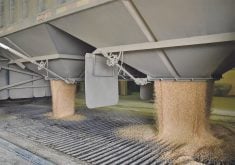According to a recent profitability analysis by Rayglen Commodities of Saskatoon, lentils have the potential to be a top money earner for the upcoming growing season while flax, soybeans and fababeans are at the bottom of the list. Changing price projections have altered the expected profitability for many crops over the past couple months.
Saskatchewan Agriculture prepares a Crop Planning Guide that’s released in early January, but it’s based on price projections from December. Manitoba Agriculture does a similar analysis around the same time.
Read Also

Kochia has become a significant problem for Prairie farmers
As you travel through southern Saskatchewan and Alberta, particularly in areas challenged by dry growing conditions, the magnitude of the kochia problem is easy to see.
Rayglen Commodities updates its analysis from time to time, capturing the price changes that have occurred. For instance, rather than the $16 a bushel canola price assumed by Saskatchewan Agriculture, Rayglen is now using a new crop canola price assumption of $13 a bu. to reflect the current outlook.
As a commodity broker, Rayglen has a good handle on new crop contract prices, which are a reasonable proxy for what the final price might be. Its analysis assumes typical yields and subtracts both variable and overhead costs to determine profit per acre for each crop. The crops are ranked according to their return on investment.
Small green lentils come out at the top of the heap with large green lentils a close second. Somewhat surprisingly, red lentils also rank highly and hold the number three spot. The new crop assumed price for red lentils is 33 cents a pound, much less than the 56 cents a lb. assumed for large green lentils. However, red lentils yield better and have somewhat lower expenses.
Number four in profitability goes to oriental mustard. Yellow mustard is in the No. 6 spot. Brown mustard lags way behind at No. 11 due to a much lower price assumption. The market for brown has struggled the past few months, dropping it from being a top money-making contender.
No. 5 for return on investment is large kabuli chickpeas. Seventh place goes to oats and eighth is durum wheat with an $11 a bu. price assumption. Ninth place goes to green peas, 10th is canaryseed and, as mentioned, brown mustard is 11th.
Malting barley is 12th with canola at 13th on the list. In past years, canola has often been one of the most profitable crops, but with a price assumption of $13 a bu. and an assumed yield of 35 bu. per acre, it barely generates a positive return in the Rayglen analysis.
Yellow peas in 14th place, with an assumed price of $10 a bushel, pencil out at a small loss. Fifteenth place is Canada Prairie Spring or feed wheat, 16th is feed barley, 17th is spring wheat with an assumed price of $7.50 a bushel, 18th place goes to flax, 19th is soybeans and the biggest loss and the biggest negative return on investment is fababeans at No. 20.
As in any analysis of this sort, you can quibble with the price projections, the assumed yields and even the variable and fixed costs. As well, producers in northeastern Saskatchewan won’t be growing green lentils and producers in southwestern Saskatchewan won’t be growing very many oats or fababeans.
The soybeans grown in Saskatchewan are mainly in the southeast corner. The yields and therefore profitability are likely to look different in the main soybean growing area of Manitoba.
Overall, the grain economy is facing starkly lower returns than those enjoyed in recent years. Markets can change, but it’s difficult to imagine events that would turn the picture around.
Kevin Hursh is an agricultural journalist, consultant and farmer. He can be reached by e-mail at kevin@hursh.ca.


















